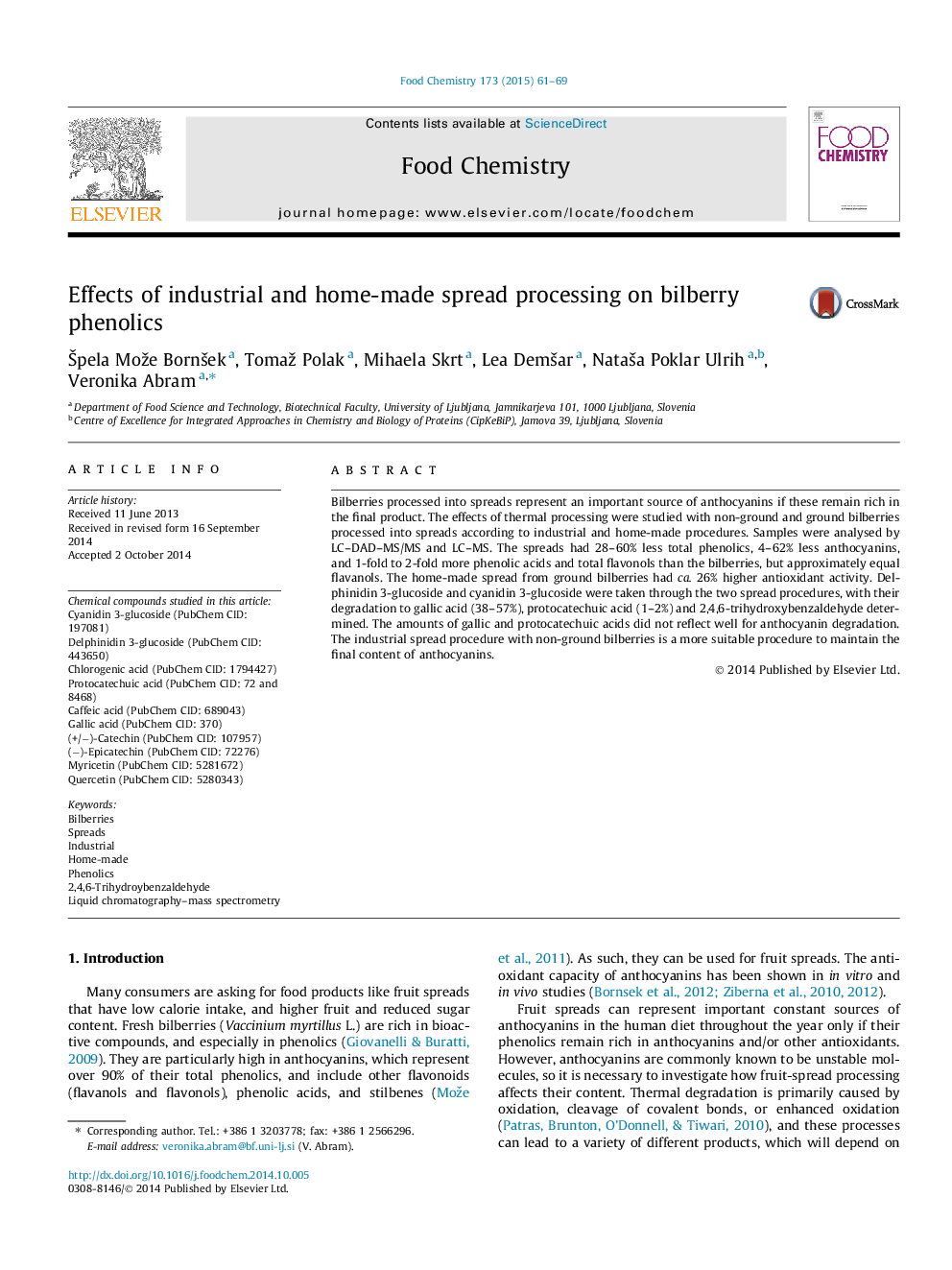| Article ID | Journal | Published Year | Pages | File Type |
|---|---|---|---|---|
| 7593412 | Food Chemistry | 2015 | 9 Pages |
Abstract
Bilberries processed into spreads represent an important source of anthocyanins if these remain rich in the final product. The effects of thermal processing were studied with non-ground and ground bilberries processed into spreads according to industrial and home-made procedures. Samples were analysed by LC-DAD-MS/MS and LC-MS. The spreads had 28-60% less total phenolics, 4-62% less anthocyanins, and 1-fold to 2-fold more phenolic acids and total flavonols than the bilberries, but approximately equal flavanols. The home-made spread from ground bilberries had ca. 26% higher antioxidant activity. Delphinidin 3-glucoside and cyanidin 3-glucoside were taken through the two spread procedures, with their degradation to gallic acid (38-57%), protocatechuic acid (1-2%) and 2,4,6-trihydroxybenzaldehyde determined. The amounts of gallic and protocatechuic acids did not reflect well for anthocyanin degradation. The industrial spread procedure with non-ground bilberries is a more suitable procedure to maintain the final content of anthocyanins.
Keywords
Related Topics
Physical Sciences and Engineering
Chemistry
Analytical Chemistry
Authors
Špela Može Bornšek, Tomaž Polak, Mihaela Skrt, Lea Demšar, Nataša Poklar Ulrih, Veronika Abram,
